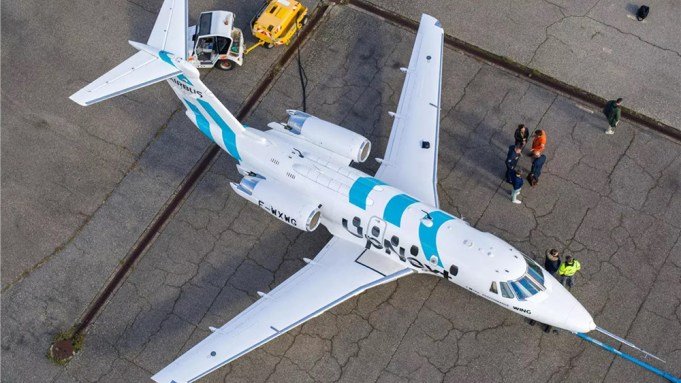Airbus Is Testing Planes With Flapping Wings to Assist Scale back Carbon Emissions

Airbus is spreading its wings and trialing some groundbreaking green technologies.
The European aircraft builder is set to begin testing new aircraft wings within months, as reported by The Sunday Times.
Airbus opened a new Wing Technology Development Centre (WTDC) at its Filton site last July to accelerate the design, construction, and testing of wings for the next generation of jets.
Airbus says making wings longer, leaner, and lighter is one of the biggest ways to improve fuel efficiency and reduce carbon emissions. As such, the innovations will help the aviation industry achieve its ambitious goal of reaching net zero by 2050.
Headed up by industry veteran Sue Partridge, the Wing of Tomorrow program has determined that future wings need to be 25 percent longer than at present. The wingspan of the A320 family of narrow-body, short-haul jets, for instance, will increase from 118 to 148 feet (feet (36 to 45 meters). The wings will also be made of composite materials that are lighter than the aluminum alloy Airbus has used for the past 40 years.
The company, which has been awarded $148 million (£117 million) by the Aerospace Technology Institute for wing-related research, has developed three 56-foot full-scale demonstrators to test new wing designs. There won’t be a demonstrator flight for the Wing of Tomorrow but it will be tested for structural capability in the Filton facility.
The Airbus AlbatrossONE.
Courtesy of Airbus
In addition, Airbus will test out some new “flapping wings” in Bordeaux, France. Christened the eXtra Performance Wing, the design is rooted in biomimicry (biologically inspired engineering) and changes shape and form during flight to maximize its aerodynamic efficiency. How? Gust sensors on the front of the aircraft register any changes in turbulence and then the system automatically makes relevant adjustments to the control surfaces of the wing to improve airflow.
The eXtra Performance Wing could work with any kind of aircraft and propulsion system, but the chosen demonstrator is a modified Cessna Citation VII business jet (pictured top). With a wingspan of 52 feet, the Cessna represents an approximately one-third scale model of the final design. The data gleaned from the upcoming test flight and (subsequent tests) will enable Airbus to determine the impact of the new wing, such as reductions in emissions and fuel consumption.
Airbus is also experimenting with hinged wingtips that increase lift and reduce drag. Named after the majestic seabird, the small-scale AlbatrossONE demonstrator has already completed a variety of tests with the semi-aeroelastic hinged wingtips.
Spreading its wings, indeed.
Authors
-

Rachel Cormack
Digital Editor
Rachel Cormack is a digital editor at Robb Report. She cut her teeth writing for HuffPost, Concrete Playground, and several other online publications in Australia, before moving to New York at the…
Read More
Source: Robb Report



